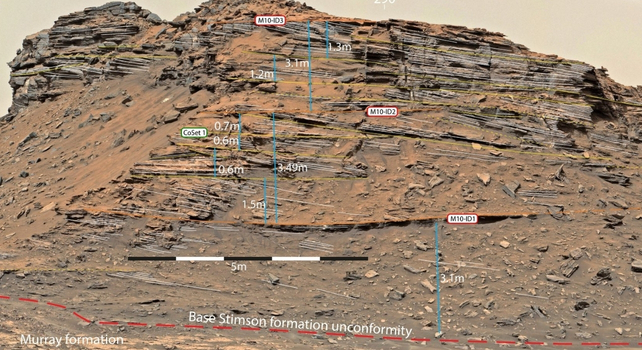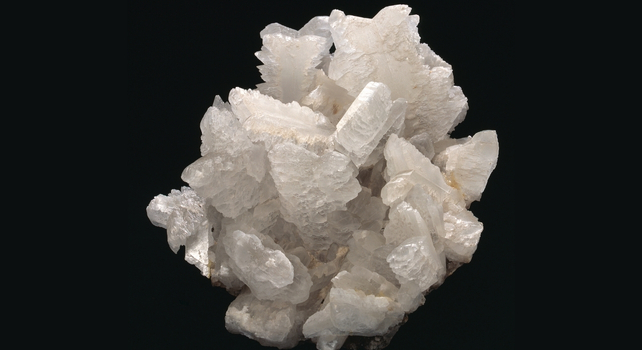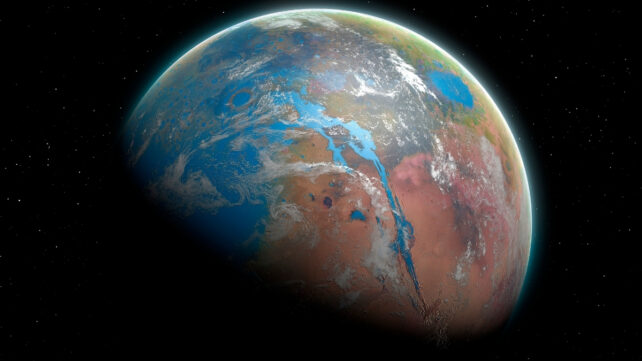It is a scientific consensus that water once flowed on Mars, and that it had a denser atmosphere, meaning that it was once habitable.
Unfortunately, roughly 4.2 to 3.7 billion years ago, Mars' rivers, lakes, and global ocean began to disappear as solar wind slowly stripped its atmosphere away. For scientists, the question of how long it remained habitable has been the subject of ongoing inquiry.
Where some scientists maintain that Mars ceased being habitable billions of years ago, recent research suggests that it experienced periods of habitability that lasted for eons. This includes recent findings by NASA's Curiosity rover, which has been exploring the Gale Crater on Mars to learn more about the planet's past.
Related: New Signals Hint at a Lost Ocean of Water Concealed Within Mars
According to new research by scientists at New York University Abu Dhabi (NYUAD), there is evidence that billions of years ago, ancient sand dunes within the crater gradually turned into rock by interacting with underground water.
Their findings, which were published in the Journal of Geophysical Research – Planets, indicate that Mars may have been habitable much longer than expected.
The research was led by Dimitra Atri, the Principal Investigator of NYUAD's Center for Astrophysics and Space Science (CASS), with assistance from fellow CASS researcher Vignesh Krishnamoorthy.
They were joined by Research Instrumentation Scientist James Weston of NYUAD's Core Technology Platforms, Postdoctoral Associate Marieh B. Al-Handawi of NYUAD's Smart Materials Lab, and Professor Panče Naumov of NYUAD's Center for Smart Engineering Materials, the Research Center for Environment and Materials, and NYU's Molecular Design Institute.

For their study, the team examined dunes in the Stimson Formation (SF), a system of wind-blown (aeolian) sand and sedimentary rock in the Gale Crater. The Curiosity rover has observed evidence of these 'lithified' formations (i.e., sediments that hardened into stone) at this location on several occasions.
Given the pervasive dry conditions in the Gale Crater, these formations likely formed during the Noachian Period (around 4.1 to 3.7 billion years ago) when extensive flooding is believed to have taken place, which included rivers that flowed into the crater.
The team accessed this data through the Mars Science Laboratory's (MSL) Curiosity Notebook, which provides access to information gathered by Curiosity's instruments. They then compared this data to field studies of rock formations in the desert environment of the United Arab Emirates (UAE), which are also known to have formed in the presence of water.
They determined that the SF was the product of late-stage aqueous activity, meaning they formed from interaction with groundwater from the nearby mountain.
They further found that this interaction left behind minerals such as gypsum, a soft sulfate mineral composed of calcium sulfate dihydrate (CaSO4) that is also found in Earth's deserts.

This latest research echoes similar findings presented by Krishnamoorthi and Atri last year at the Tenth International Conference on Mars, which took place from July 22nd to 25th at Caltech in Pasadena, California. In that study, they examined data collected on the Greenheugh Pediments (GP), a nearby dune formation with similarly lithified rock deposits.
In both cases, the researchers believe that these dunes and their systems of underground water led to the creation of these curious formations, which could have significant implications in the search for past (and present) life on Mars.
On Earth, sandstone deposits contain some of the oldest evidence of life, including communities of microorganisms that bind sediment and cause minerals to precipitate. Based on these terrestrial analogues, Atri and Krishnamoorthi's team believe that lithified deposits in the Gale Crater could contain the preserved remains of ancient bacteria.
This latest research not only provides new insight into how Mars evolved and transitioned to the extremely cold and dry environment we see there today. It also suggests that these sites would be good candidates for future missions that will continue the search for life on Mars.
This article was originally published by Universe Today. Read the original article.

